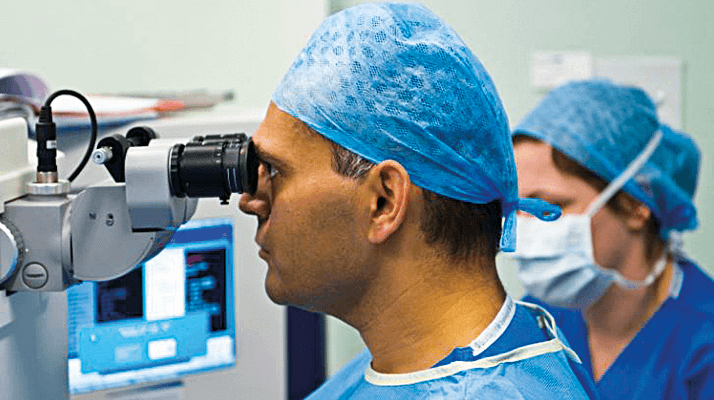


- Many patients who need cataract excision don’t know what they want from the procedure, or what’s actually achievable
- Understanding what they want is the first step in managing their expectations – either upwards or downwards
- Education is paramount; patients need to be on-board with their post-operative vision before surgery
- Formalizing what’s agreed between patient and surgeon is central to cementing this understanding

Patients’ expectations from cataract surgery have changed massively over the last twenty years. Previously, most people would undergo cataract surgery only at the point where their clouded crystalline lenses have seriously impacted their quality of life. Why? People expected a slow recovery after surgery (as was the case at the time) and any improvement in vision was gratefully received. Today, it’s a different story. Surgical techniques have advanced; incision sizes are smaller, IOLs can be toric and multifocal. Lasers can automatically and reproducibly produce a 5 mm rhexis every single time. Recovery times are fast, and patient outcomes (and expectations) are substantially different to those of two decades ago – with good reason. The process has advanced so far that not only are people undergoing cataract surgery far sooner than previously, people now undergo clear lens exchange as a purely refractive procedure – cataracts don’t enter into the equation.
In my practice many patients now undergo what I term “customized cataract surgery”, where special emphasis is placed on achieving some post-operative independence from glasses. Technological advances have also helped. Multi-modal ocular biometry combined with corneal topography), together with scans such as corneal specular microscopy and OCT scanning are now routine parts of our patient assessments. These represent a great step forward in surgical planning, and I consider these steps to be essential in order to deliver the best possible safety and objective outcome metrics.
We now devote considerable time to the art of discussion with our patients. The rationale behind this is simple – we can get everything right, but if it isn’t what the patient expected, then we will have failed in our primary objective, which is to achieve patient satisfaction. This is why (as my residents will attest), an often-repeated phrase of mine is, “We don’t treat a set of eyes, we must treat the whole person”.
We consider managing patient expectations as a five-part process:
1. Understand what the patient wants. First listen to the patient’s concerns and aspirations. A patient with cataracts may be perfectly happy just to get rid of the visual impact of the cataract, and the issue of glasses is of low secondary importance. Equally they may nurture a strong motivation to have reduced spectacle dependency. As surgeons, we must have a full understanding of what the patient wants. Beware the patient who harbors such motivations but does not express them! It’s our job to ask the right questions. When we have listened fully we move onto the next stage.
2. Reality check:before Can we realistically.... This is where a surgeon must draw on their knowledge and personal experience to asses if we can realistically deliver what they want.. The cataract patient who just wants better sight and doesn’t mind wearing glasses is clearly more readily satisfied than the patient who wishes for total spectacle freedom. The key word here is ‘realistically’. If the patient’s desires are unlikely to be met – even if in part – then we must move onto the third stage.
3. Negotiation. The surgeon calls on their own experience to modify the patient objectives if they are unreasonable or just unlikely to be met fully by the treatment(s) available. In my practice, I have found the vast majority of patients are pliant in their initial objectives – after all they don’t know what’s achievable! It may be that the patient has to accept certain areas of visual compromise – e.g. glasses may still be required for prolonged computer work, if the major desire is for sufficiently good close vision to read comfortably without glasses (or vice versa). There must be dialogue and this will hopefully lead to the fourth stage.
4. Agreement. Most of the time, I have found it possible to reach a clear, bilateral understanding of the objectives that are to be set for the planned treatment. In rare cases you might not be able to reach an agreement, in which case it may be best to advise against the planned treatment.
5. Documentation. If stage four is successful, it’s imperative to document the agreement and any caveats reached, and to communicate this formally to the patient in writing. This underscores both the discussion and the eventual conclusion, helping to reinforce the clarity to the benefit of both the patient and the surgeon.
This five-stage approach to managing patient expectations has been applied across a range of scenarios in my practice, but in particular, I have found it helpful in improving patient satisfaction rates for both cataract surgery and elective vision correction treatments.
Shafiq Rehman is the Medical Director of Bettersight Advanced Eye & Vision Consultants, Leeds, UK.
